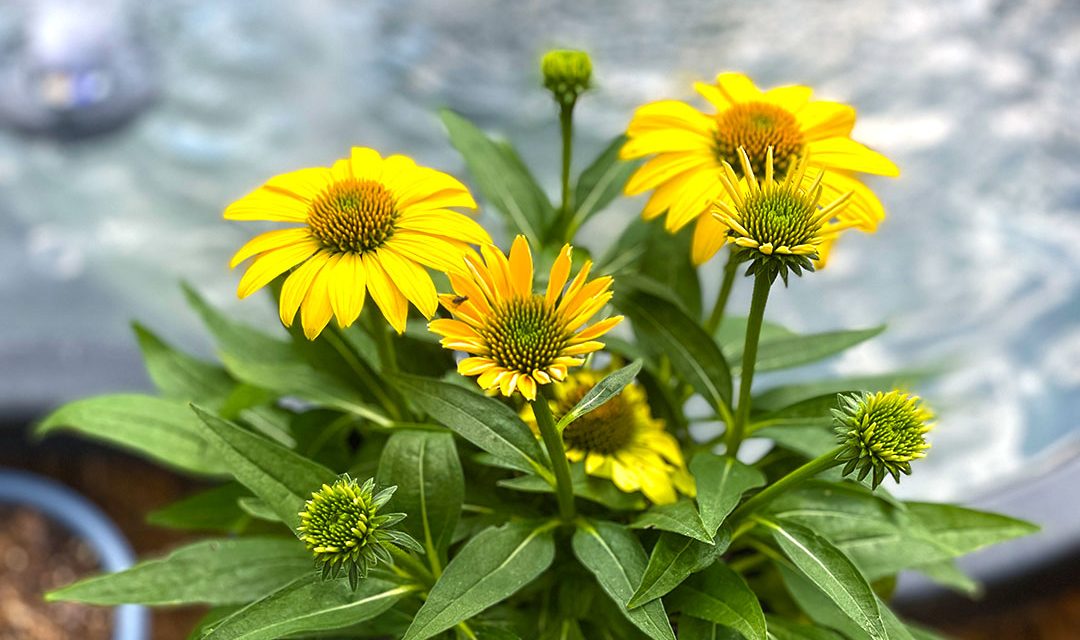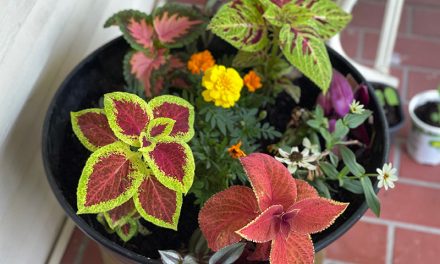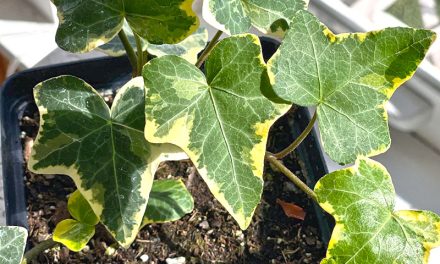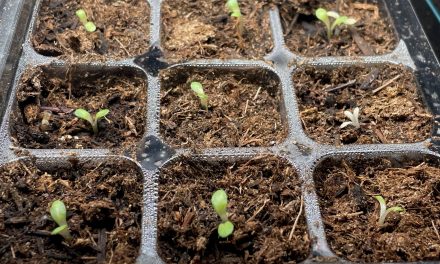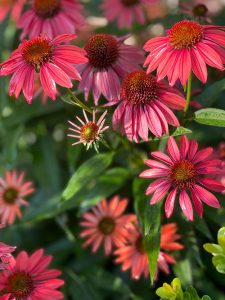
Coneflowers
Here are some tips for planting coneflowers in your garden:
- When to plant: Coneflowers can be planted in the spring or early fall.
- Where to plant: Choose a site with full sun and well-drained soil that’s not too heavy.
- How to plant: Dig a hole that’s twice as wide as the root ball and just as deep. Loosen the soil at least 12 inches deep. Remove the plant from its pot and gently tease out any roots. Place the plant in the hole with the base level with the soil. Backfill the hole with soil and tamp down slightly to remove air pockets.
- How to space: Space plants 1 to 3 feet apart, depending on the variety and mature size of the plant.
- How to water: Water well and keep it watered for at least one week, until the plant is established.
- Other tips:�Add a Miracle-Gro Quick Start Planting Tablet into the planting hole.�Chop up the sides and bottom of the hole and backfill with a little compost.�Apply a thin layer of mulch, making sure not to smother the stems.
Planting Coneflowers
Coneflowers, also known as Echinacea, are popular perennial flowers that are easy to grow and care for. They are known for their striking blooms and ability to attract butterflies, bees, and other pollinators. Here are some tips for planting coneflowers:
1. Choose a sunny location: Coneflowers prefer full sun, so select a spot in your garden that receives at least 6 to 8 hours of direct sunlight per day. In warmer regions, a little bit of afternoon shade can be beneficial to prevent the flowers from wilting.
2. Prepare the soil: Coneflowers are adaptable and can tolerate a variety of soil conditions. However, they prefer well-draining soil. Before planting, loosen the soil to a depth of 12 to 15 inches and mix in compost or aged manure to improve fertility and drainage. While coneflowers can tolerate poor soil, adding organic matter can enhance their growth and blooming.
3. Planting method: Coneflowers can be started from seeds, root divisions, or purchased plants. If starting from seeds, sow them in early spring after the final frost. Seeds will germinate in about three to four weeks and produce leaves in three months, but it can take up to two years for them to bloom. If using root divisions or purchased plants, plant them in the ground after the threat of frost has passed.
4. Spacing: When planting coneflowers, space them about 18 to 24 inches apart to allow for proper air circulation and growth.
5. Watering: While coneflowers are drought-tolerant once established, it is important to water them regularly during their first growing season to help them establish a strong root system. After that, they will require less frequent watering.
6. Maintenance: Coneflowers are generally low-maintenance plants. Deadheading spent flowers can encourage continuous blooming. In the fall, you can cut back the plants to the ground to tidy up the garden and prevent the spread of diseases. If you notice any signs of disease or pests, such as distorted petals caused by Eriophyid mites, it is recommended to cut back infected plants and destroy the infected parts.
7. Winter care: Coneflowers are hardy plants that can withstand cold winters. However, providing a layer of mulch around the base of the plants in late fall can help protect the roots from extreme temperatures. Remember, coneflowers are native to different regions of the United States, so it’s important to choose varieties that are suitable for your specific climate and growing conditions. Enjoy the beauty of these vibrant flowers and the pollinators they attract in your garden!

A Way we grow
Views: 0

